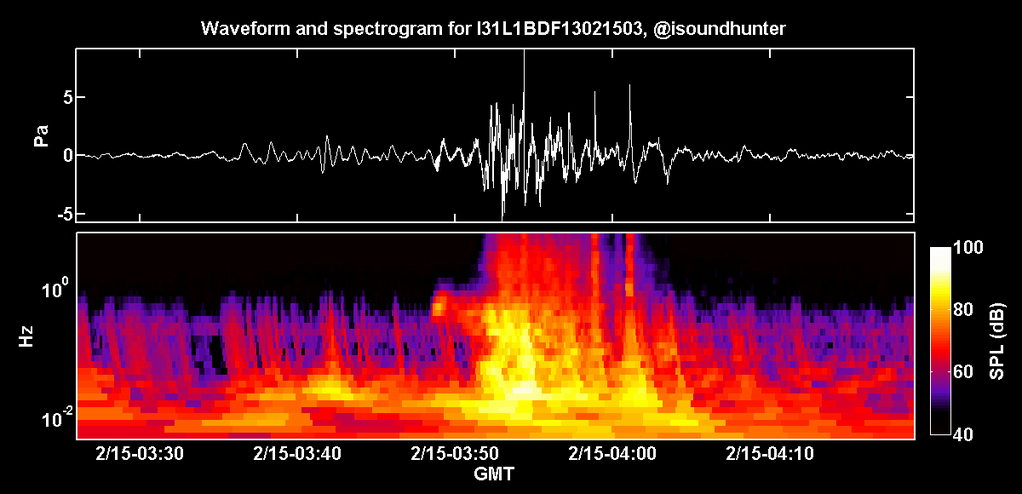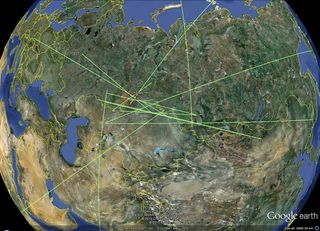Russian Meteor Blast 'Heard' Around the World

The shock wave from Friday's (Feb. 15) meteor explosion above Russia sent subsonic waves through the atmosphere halfway around the world.
Up to 11 sensors in Greenland, Africa, Russia's Kamchatka Peninsula and other far-flung regions detected the Russian meteor blast's infrasound, or low-frequency sound waves. The sensors are part of the global network of 60 infrasound stations maintained by the Comprehensive Nuclear Test Ban Treaty Organization (CTBTO).
Infrasound's long wavelengths (about 20 to 0.01 Hertz) can travel far distances in the atmosphere, at frequencies humans can't hear. Elephants, whales and even pigeons use infrasound for communication and navigation, scientists have discovered.
The CTBTO relies on Infrasound arrays to help determine the location and size of atmospheric explosions. Man-made explosions, such as bombs, produce a different infrasound pattern than natural fireballs like shattering meteors.
Based on scrutiny of infrasound records, NASA scientists concluded the fireball released about 300 kilotons of energy, said Bill Cooke, lead for the Meteoroid Environments Office at NASA’s Marshall Space Flight Center in Huntsville, Ala.

That's about 20 to 25 times more powerful than the atomic bombs dropped in World War II, but still smaller than Siberia's Tunguska meteor explosion in 1908, which released 10 to 15 megatons of energy (equivalent to the Castle Bravo device, the most powerful atomic bomb tested by the United States).
"This was a moderate explosion," said Paul Chodas, research scientist in the Near Earth Object Program Office at the Jet Propulsion Laboratory in Pasadena, Calif.
Get the Space.com Newsletter
Breaking space news, the latest updates on rocket launches, skywatching events and more!
Reach Becky Oskin at boskin@techmedianetwork.com. Follow her on Twitter @beckyoskin. Follow OurAmazingPlanet on Twitter @OAPlanet. We're also on Facebook and Google+.
Join our Space Forums to keep talking space on the latest missions, night sky and more! And if you have a news tip, correction or comment, let us know at: community@space.com.

Becky was a science reporter at The Pasadena Star-News. She has freelanced for New Scientist and the American Institute of Physics and interned at Discovery News. She earned a master's degree in geology from Caltech, a bachelor's degree from Washington State University, and a graduate certificate in science writing from the University of California, Santa Cruz. To find out what her latest project is, you can follow Becky on Twitter.
